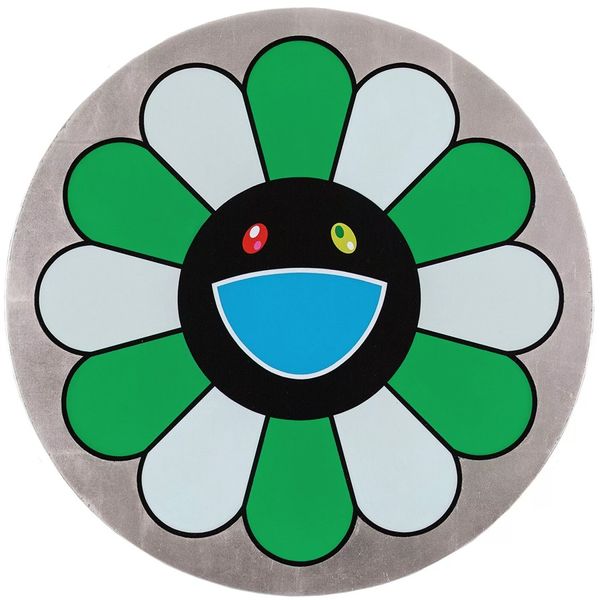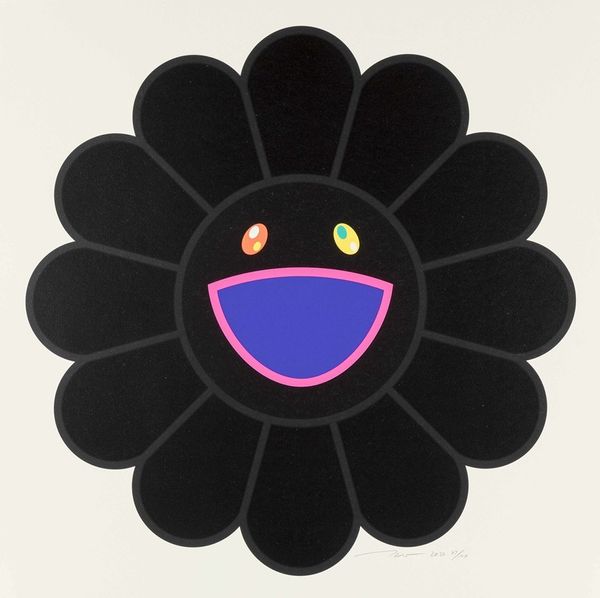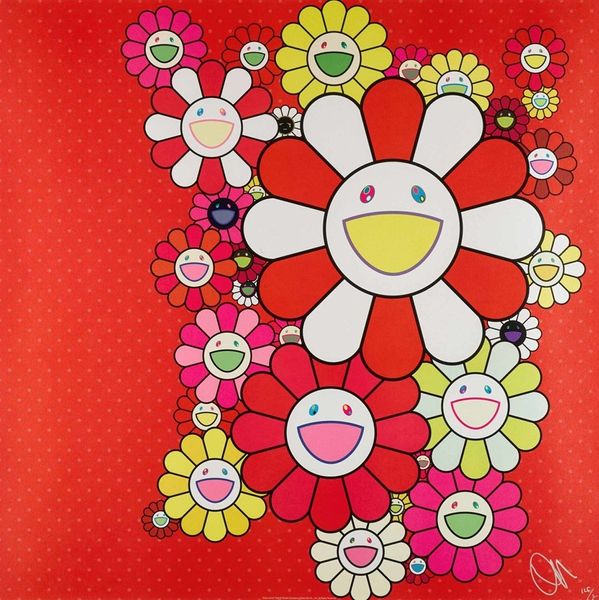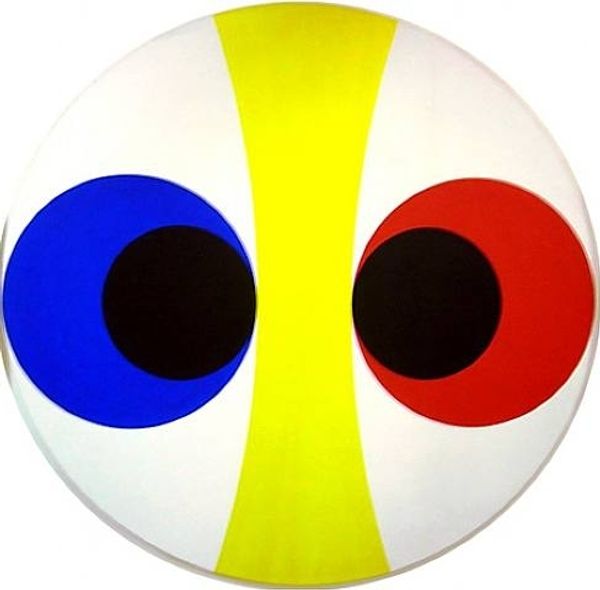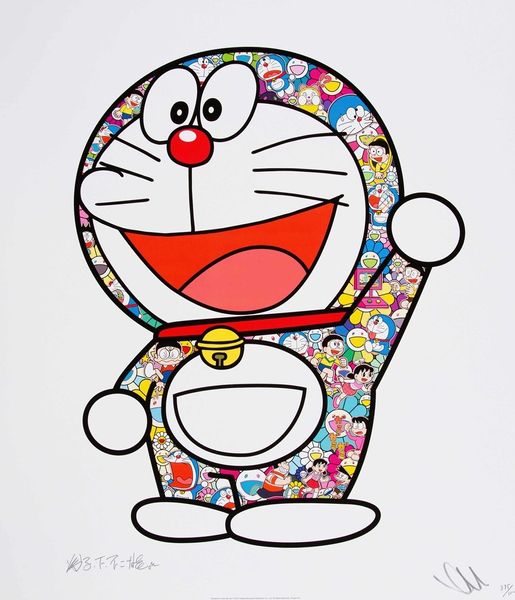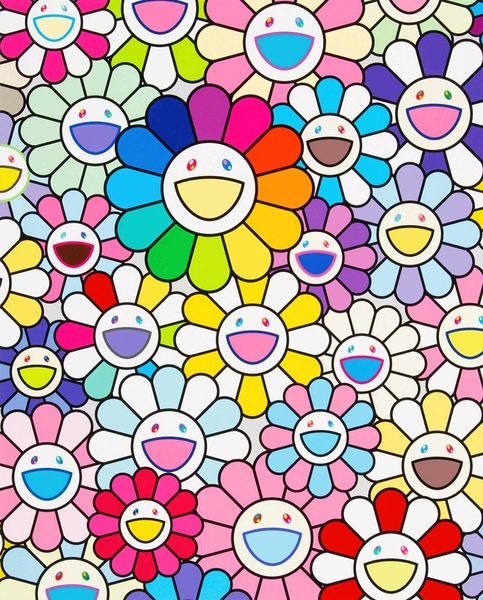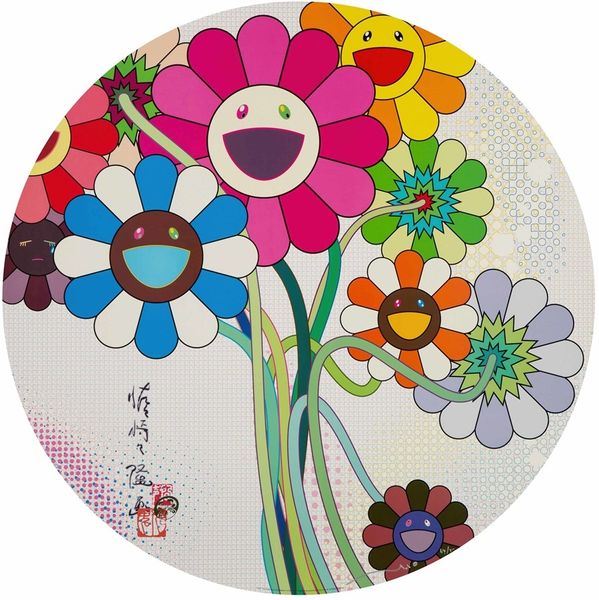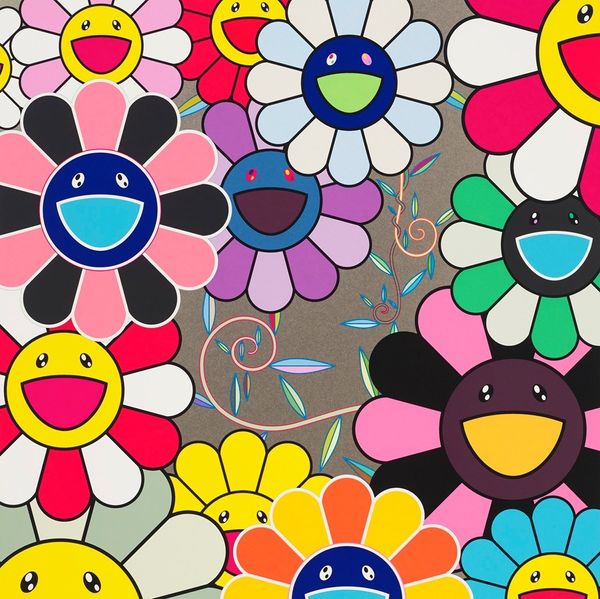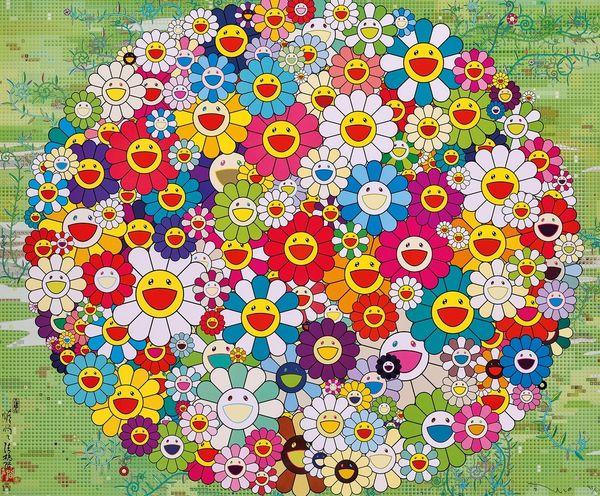
#
neo-pop
Copyright: Modern Artists: Artvee
Editor: So, here we have Takashi Murakami's "Flower of Joy," created in 2007 using acrylic paint. It’s… strangely cheerful, like something out of a children's cartoon, but with a more polished, almost manufactured feel. What do you make of its impact? Curator: From a materialist perspective, its “manufactured feel” is precisely the point. Consider the context: Murakami built a factory-like studio to produce these works, blurring the lines between "high art" and mass production. The polished acrylic surface is itself a manufactured product, symbolic of a society obsessed with surface and spectacle. The flatness also eradicates traditional notions of artistic skill embedded in depth and texture. Editor: So, it's not just about the image itself, but how it was made, its process? Does the smiley face undermine any serious message? Curator: Not undermine, embody! Look at the industrial process: how many individual artisans, perhaps nameless, do you think labored on a work such as this? How does the consumption of something cute and cheerful deflect viewers from critical thinking about their complicity within such industrial modes of production? Murakami often uses such figures as commentary on post-war Japanese culture and the impact of consumerism, so how can joy also signify alienation or emptiness? Editor: So, that’s the flower of joy… and maybe the joy of consumerism, or something? I'm starting to see that even seemingly simple images can carry pretty complex social and economic ideas about production and value. Curator: Precisely. We can engage with its surface aesthetic appeal and be prompted towards deeper examination about its underlying material, conditions and modes of consumption.
Comments
No comments
Be the first to comment and join the conversation on the ultimate creative platform.
